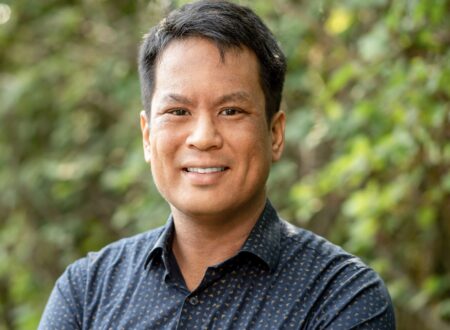Cet article est uniquement disponible en Anglais.
Recently, the Fraser Institute released a report, entitled “Ever Higher: Government Spending on Aboriginals since 1947”. In stories on the report, the media reported author Mark Milke suggesting that his study “should put to rest any notion that the grinding poverty on aboriginal reserves is because they’ve been shortchanged by Canadian taxpayers.” What’s the problem then? “I think some aboriginal leaders on aboriginal reserves might be shortchanging some aboriginal people,” Milke is reported to have told Sun News.
How does Milke get to these conclusions? He compared how much the federal government spent on First Nations in 1947, to how much it spends on First Nations today, in 2013. The numbers, unsurprisingly, are huge. In figures that the report claims are inflation-adjusted, the report states that, for instance, while Indian Affairs spent $79 million in 1947, the now-renamed Department of Aboriginal Affairs and Northern Development spent $7.9 billion in 2011-2012, or an increase of 99-fold (p.9).
But even the Fraser Institute admits that the numbers are a lot less impressive when you factor in the fact that there are a lot more First Nations people in Canada now than in 1947. When you account for population growth by looking at per-person funding, it turns out that funding only grew 9-fold. This, says the report, is much higher than federal spending per-person for all Canadians, which only grew by about 4-fold in the same period (p.13).
But as OKT and others have pointed out before, this kind of comparison invites a false equivalence. On First Nation reserves, the federal government is responsible for spending on pretty much all services. For most non-Aboriginal Canadians, three different governments spend money on services: federal, provincial, and municipal.
The importance of that distinction has increased significantly since 1947. Most Canadian social programs did not exist then. In the 1950s and 60s public services expanded dramatically, largely at the provincial level. Health, education, family services, social assistance – all began or expanded under provincial jurisdiction.
So when you say federal spending on on-reserve First Nations grew faster than federal spending on non-Aboriginal Canadians, it is no surprise. The big ticket items, like health and education, are primarily provincial responsibilities outside of First Nation reserves. Some others, like water or roads, are primarily municipal responsibilities outside of First Nation reserves. Yet on a reserve, the federal government is responsible for all of those items. So of course there is more federal spending per person on reserve than off.
But isn’t $7.9 billion still a lot of money? Sure – but it’s important to put public spending figures into some kind of context.
The first thing to note is that any time you talk about government spending, it sounds like a lot of money. The Toronto Police, for example, spends about $1 billion per year. That is a lot, but then Toronto is a pretty big city. It works out to be about $350 per Torontonian per year. Is that a lot? Maybe – but then that’s less than a dollar a day to have a trained professional ready to come deal with your problems 24 hours a day, seven days a week.
The second point is that life in Canada is pretty different now than in 1947. Here is just a partial list of things that governments do now that they didn’t very much back then: provide health care, provide expressways, build airports, support university education, just to name a few. So more money is spent on reserves now than in 1947. That shouldn’t be surprising because more money is spent by governments everywhere than in 1947.
And money spent by Aboriginal Affairs isn’t necessarily to the benefit of Aboriginal people. A bunch of that $7.9 billion never reaches any First Nations services. For instance, here is one more thing that Aboriginal Affairs spends more money on now that Indian Affairs didn’t in 1947: lawyers. Why? Until 1951, First Nations were forbidden by law from hiring lawyers, unless the Minister of Indian Affairs gave them permission to do so. So the government didn’t have to worry about challenges to its decisions. On the other hand, today, Aboriginal Affairs spends more than $100 million per year in litigation against First Nations. This, of course, is $100 million that figures in to the Fraser Institute report’s $7.9 billion of spending per year, $100 million that is used to oppose the interests of First Nations, some of which is spent because the federal government itself has failed to live up to its constitutional obligations. Sometimes the Crown will even spend money to go to court to defend the position that it doesn’t have to comply with a treaty it signed in 1993!
The point is this: money spent by Aboriginal Affairs isn’t necessarily to the benefit of Aboriginal people.
All of this is to say that adding up the dollars spent is an interesting but trite exercise that doesn’t really go to answering the question of whether enough is being spent, whether it is being spent in the right way, and whether the amount being spent is fair.
Those are much bigger questions that require a deeper analysis than just looking at raw spending numbers. Just to give a couple of examples, consider Shannen’s Dream, a campaign to end unequal funding for First Nations schools; or Don Drummond, the former chief economist at TD Bank who argues even equal funding may not be enough.
So imagine your spouse asks you to get some orange juice from the supermarket. You go and you come back with a piece of steak and you tell him, “You should be happy! I blew $50 on that steak, which is a lot more expensive than steak was in 1947!” The Fraser Institute thinks he should just be glad it’s not 1947. I doubt very many people would agree.
By Senwung Luk
Related Posts

AMC Wins Unprecedented Discount Hydro Rates for On Reserve Residents
By Senwung Luk and Corey Shefman
On May 1st, 2018, Manitoba’ Public Utilities Board adopted recommendations made by the Assembly of Manitoba Chiefs (“AMC”) to create a new electricity rate…
Read More...
Revenue Sharing - What Happens After the IBA?
WEBINAR ARCHIVE
This webinar was originally aired on Tuesday, July 29.
In this program, speakers Senwung Luk and Nick Kennedy provide insights on:
Revenue sharing under IBAs Common… Read More...
OKT Podcast - What is Bill 5 & C-5 and What Does it Mean for Indigenous Jurisdiction?
Friday, July 4, 2025
In this episode, partner Senwung Luk is joined by Randall Kahgee, David Wright, and Martin Olszynski for an in-depth discussion on Bill 5…
Read More...

